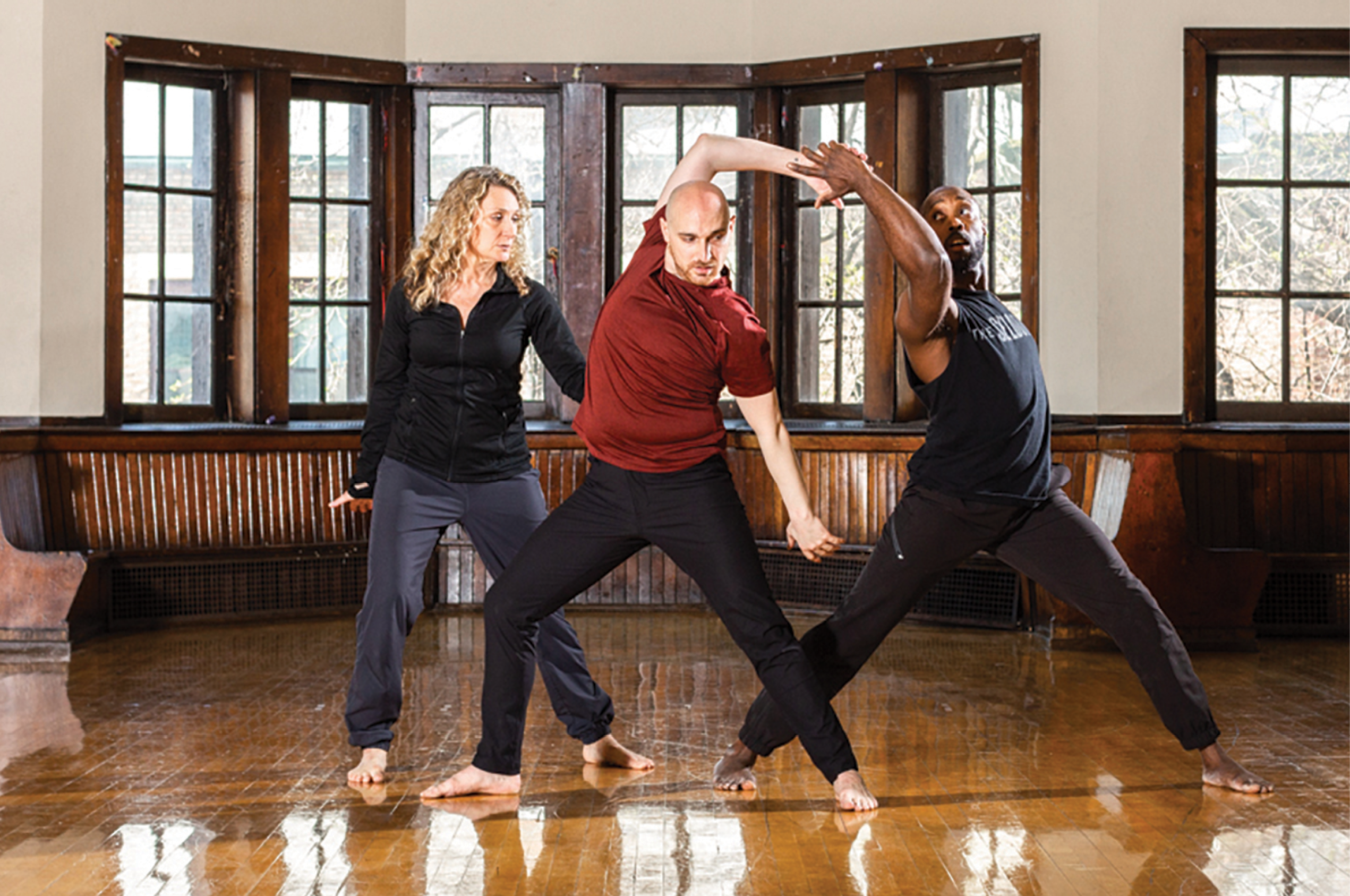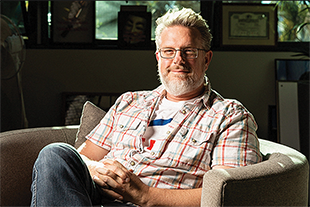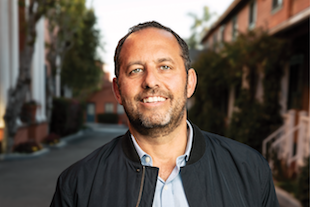Dance Apocalyptic
DEMO Portfolio
The Seldoms bring real-world issues to the Chicago dance scene.
Imagine bodies that shift not with the carefully articulated precision we normally ascribe to dancers, but with the texture of ordinary human movement. These are bodies telling stories of history, of social impact, of cultural evolution. They occupy the stage with a primal purpose. They are The Seldoms, a Chicago-based dance company founded by Dance faculty member Carrie Hanson. Since forming the group in 2001, she has watched it grow into the acclaimed institution it is today; one that’s been praised by the Chicago Tribune, Chicago Reader, and TimeOut Chicago, and has received a National Performance Network Creation Fund and a National Dance Project Production Grant.
Hanson began her dance career as a performer before transitioning to choreography, where she started with smaller projects, like solo work and the occasional duet concert. After attending graduate school at Trinity Laban in London, she came to Chicago, where she began teaching dance at Columbia. The Seldoms was formed around this time, as Hanson found her roots in the city. Through her work at Columbia’s Dance Center, she met and trained with various dancers—many of whom would eventually join the group.
“That was more accidental than it was an intentional or formalized relationship,” Hanson said of the inclusion of Columbia alumni in the company. “It’s because that was my home base, and that’s where I was seeing a lot of young dancers.”
The Dance Center was ripe with talent that lent themselves to Hanson’s vision of a dance company that takes the art form “out of the realm of mere entertainment,” as she puts it. “I’m interested in dance being understood as another viable way of perceiving the issues that we’re all dealing with in our daily lives, whether they’re issues around political power, issues around identity politics, issues around environmental concerns and crises.” Dance Center students were uniquely equipped with skills transferable to this idea because they’re grounded in theory and technique, and have a grasp on composition, according to Hanson.
“One of the reasons why it’s worked for me to pull from Columbia is because I know they’re getting good training there, not just in the studio but in terms of how they’re thinking about themselves as a whole artists,” she said. Within The Seldom’s DNA, there was an interdisciplinary thrust from the beginning.”
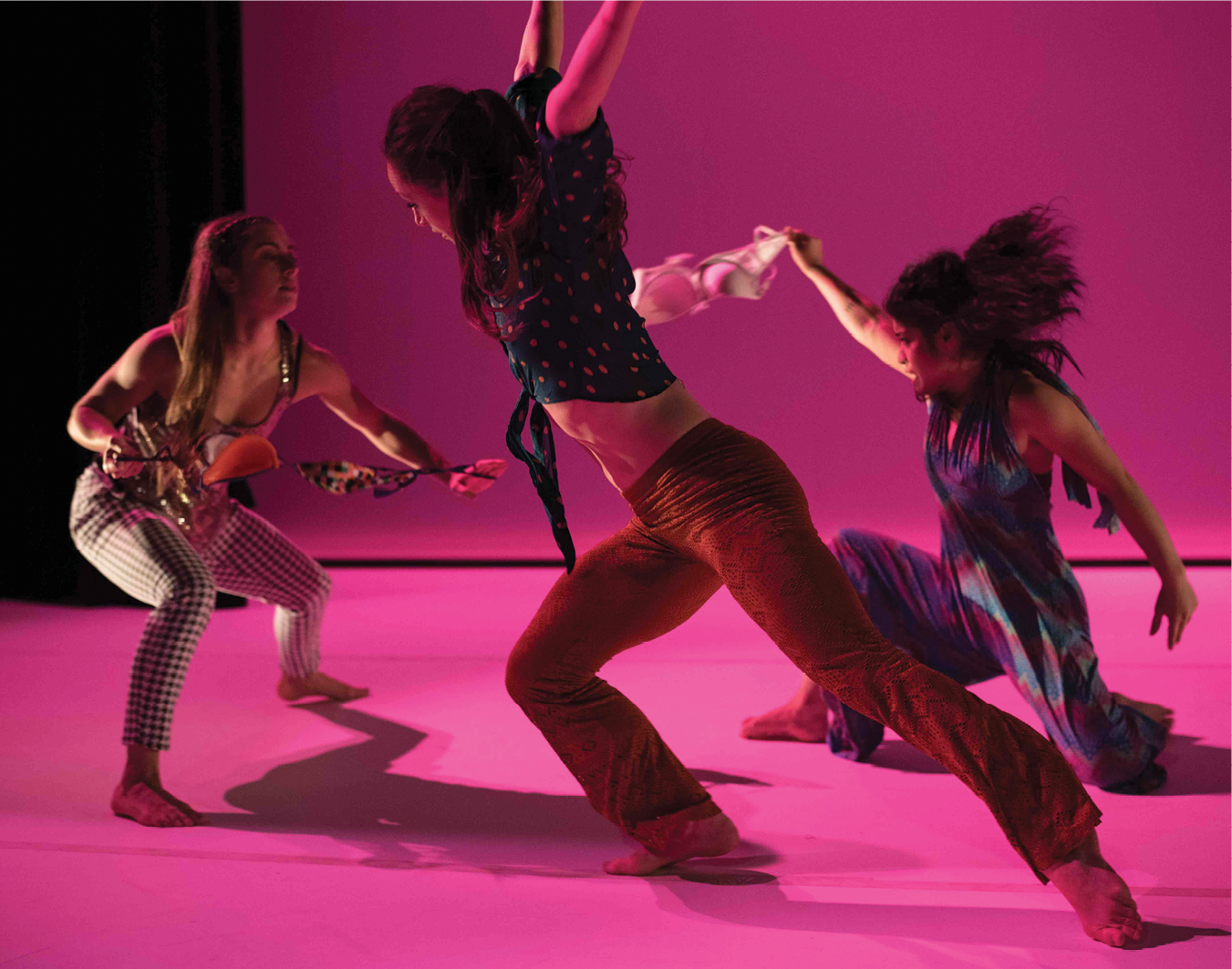
Sarah Gonsiorowski, Cara Sabin '06, and Hannah Santistevan '16 perform a section of RockCitizen (2016) about the Women's Lib movement of the 1960's and 70s. |
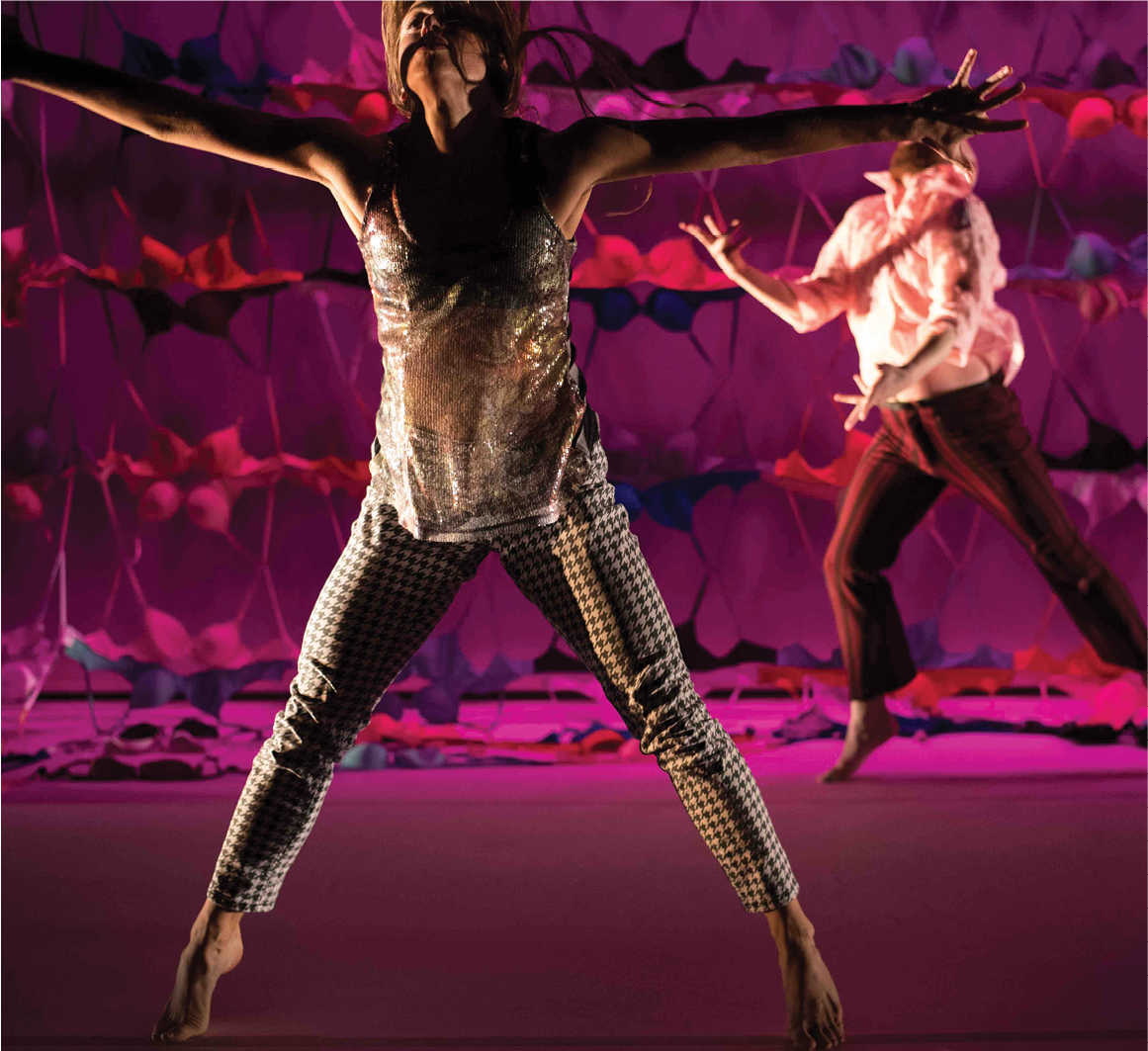
Sara Gonsiorowski and Philip Elson '11 perform a section of RockCitizen (2016) about the power of and protest by the people. |
Philip Elson ’11 is a former student of Hanson’s who joined the company in 2008. “I knew right away from taking [Hanson’s] classes and learning from her that this was someone I wanted to align myself with,” Elson said. He was also intrigued by The Seldoms after attending Convergence, a site-specific work that the company performed in a 17,000-foot garage. “After seeing that and seeing the audition announcement, there was no hesitation in my mind that I wanted to be a part of this organization that worked in the untraditional and did it with such excitement and excellence.”
Matt McMunn ’10 worked with The Seldoms summer intensive program in 2010 before joining the company in 2015. His first performance as a company member, Power Goes, used Lyndon B. Johnson as a figure to explore the cost and benefit of power. “One of the things I enjoy the most about working with The Seldoms is that I get to explore a variety of subjects and curiosities through novel artistic approaches with groups of fascinating people,” McMunn said.
The company is currently working on a project called Floe, which is about the issue of climate instability. The idea came from Ocean Geographic, a conservation and ocean awareness magazine, which approached Hanson with the idea of exploring climate concerns through dance performance in an effort to merge the line between art and science. The Seldoms previously tackled the topic of climate change in 2012’s Exit Disclaimer: Science and Fiction Ahead, so Hanson wanted to take a different, “back door” approach.
“One of the paths that we’re taking towards this topic is to think about conspiracy theory, because one of the ways that the Republicans, Donald Trump, and the fossil fuel industry try to discount the climate crisis is to still call it a hoax, a conspiracy theory,” Hanson explained. “So we’re kind of looking at that anti-science prejudice or the distrust of science in our country.”
Floe—which will see its full-length premiere in January 2020—is just one example of the unique perspective The Seldoms lends to the Chicago dance scene: One that’s constantly evolving and challenging conceptions about what dance can and should look like, and one that owes a hand to Columbia’s Dance Center but that’s ultimately a part of the Chicago dance landscape as a whole.
“We are truly an artist-led organization in the administrative sense, and we are truly collaborative in the making and construction of our productions,” Elson said. “To say it’s a team effort doesn’t scratch the surface of how tightly knit we all work together to achieve success.”
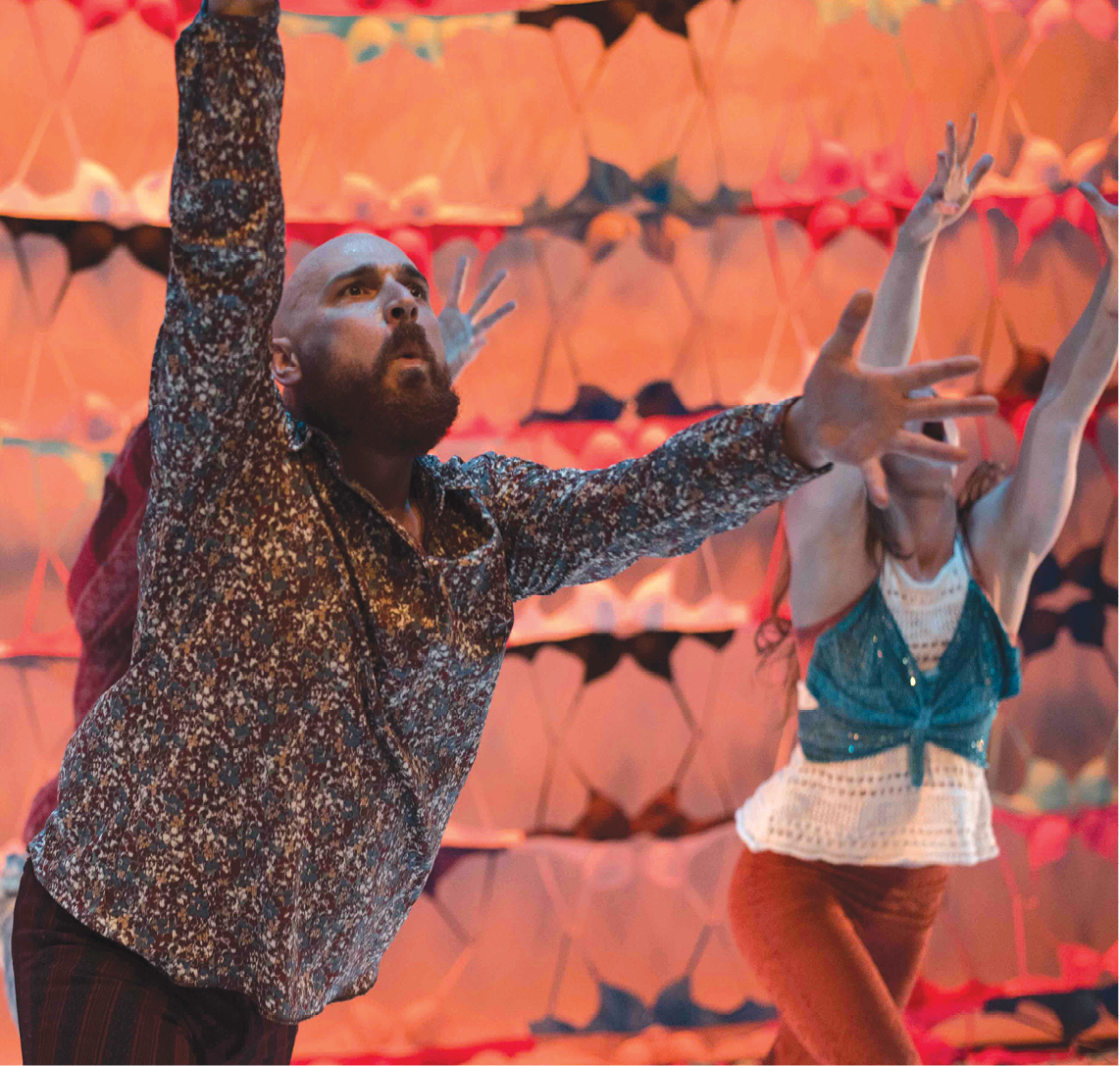
|
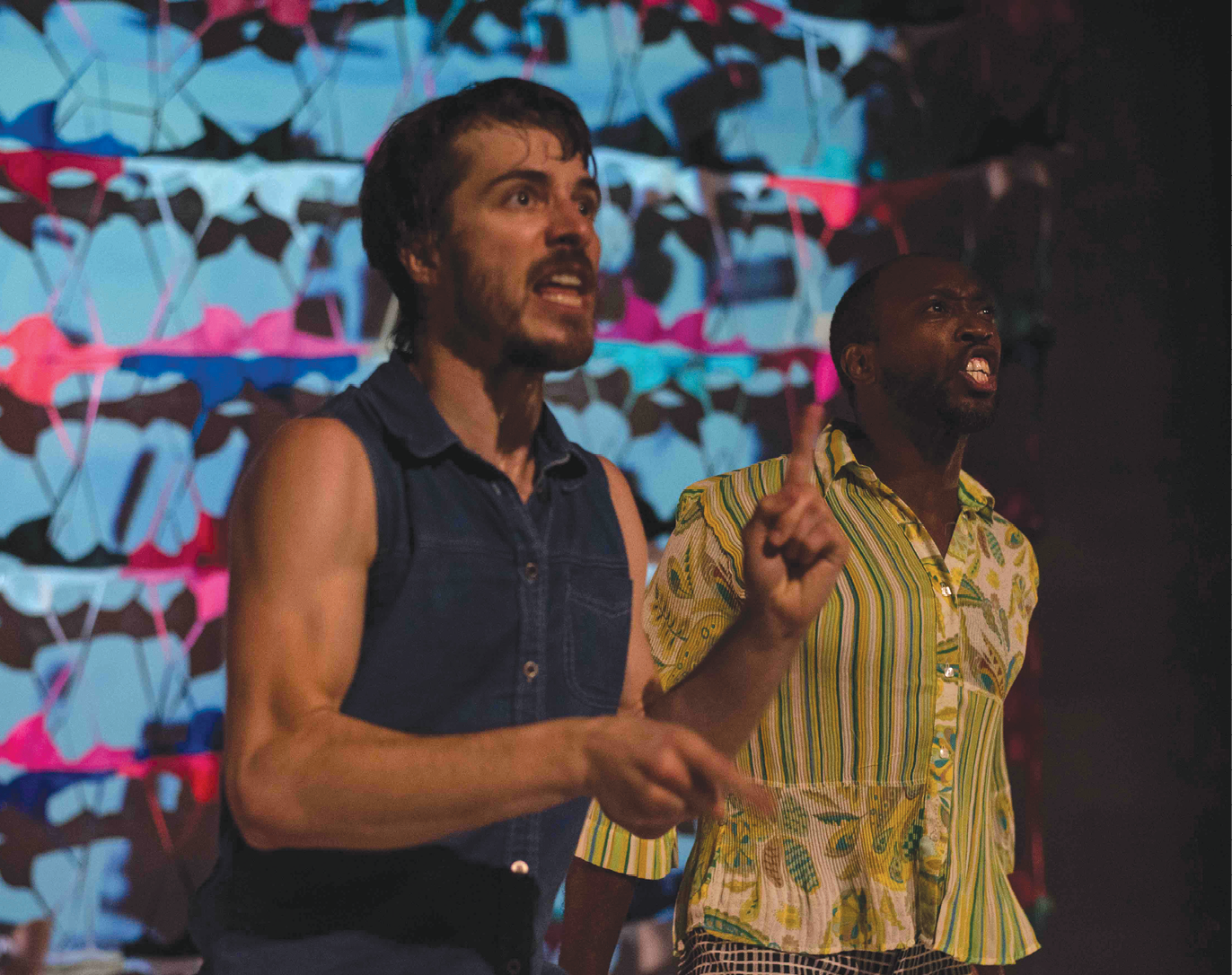
|
Photos: Maureen Janson Heintz
